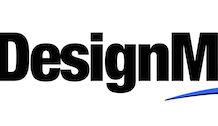For a print service provider (PSP) everything comes down to numbers, especially when – thanks to the pandemic – there has been a dramatic reduction in print orders. The current economic climate dictates that businesses need to innovate and as printers, it is necessary to remind brands of the value that print is able to bring to the table, thus making it relevant once again. This is where print finishing comes into the equation.
Print finishing has the ability to transform a low-value piece of printed paper into something of appeal and value, determining whether it will end up in a drawer (or even worse, in the bin) or on either a coffee table or a desk.
Commercial printers, in-house print shops and pay-for-print businesses are looking to broaden the scope of their products and services, while also looking to automate processes as far as possible within their businesses.
‘Not only is it cost-effective for PSPs to automate their processes but with tighter deadlines coupled with ever-increasing expectations from their customers, having a fully automated workflow simplifies the process and makes it easier to reduce lead times,’ said Keith Knott, Senior Manager: Sales of Altron Document Solutions’ Production Systems Division.
With a variety of equipment to choose from, PSPs can focus on anything from the cutting of documents to creasing, folding, collating and binding. Knott noted that lately more PSPs are venturing into the packaging and labelling market. ‘Quantities for packaging and labels have become less, while customers demand a quicker turnaround time,’ he said, also stating that personalisation can be added as a means of adding to a business’s bottom line.
With the technology available, printers can set up the size and dimensions, as well as the overall look and feel of the product. They are then able to print the job and send it to their machine for finishing. These solutions are changing the way commercial printers are able to expand into this market, being able to test the waters by starting on a small scale and then determine if doing it on a larger scale be a viable addition to their business model.
The pandemic has made it necessary for PSPs to implement either short time or retrenchment as a means of reducing operating expenditure and thus ensure the longevity of their businesses. The challenge however is that there is still work that needs to be done, which the equipment currently available is able to address, by making it possible for them to automate their businesses. Big commercial printers are now able to quickly merge litho and digital work into bound books, all via an automated process.
‘Our customers are seeing a huge increase in profits along due to the fact that they are able to invoice their customers sooner, because of the automation the Duplo products brought to their print process. Bringing Duplo equipment into their businesses has enabled them to upsell on print orders, while being able to have quicker lead times and this in turn has allowed for them to invoice the job in a shorter space of time,’ said Knott. ‘Where it previously took up to a week to complete an order, our customers are able to have it ready in about one to two hours, depending on the size of the print run, as well as the complexity of the finishing required,’ he added. ‘Customers are able to have business card orders ready and boxed in a personalised box within an hour.’
ALTRON DOCUMENT SOLUTIONS
+27 11 928 9111
hotline.marketing@bdsol.co.za
www.altron.com
www.bytesdocumentsolutions.co.za





















